-
 Bitcoin
Bitcoin $81,879.4851
-1.40% -
 Ethereum
Ethereum $1,768.8752
-1.40% -
 Tether USDt
Tether USDt $0.9998
0.00% -
 XRP
XRP $2.0232
-0.04% -
 BNB
BNB $585.7844
-1.28% -
 USDC
USDC $0.9999
0.00% -
 Solana
Solana $113.6118
-2.13% -
 Dogecoin
Dogecoin $0.1605
0.15% -
 TRON
TRON $0.2371
2.46% -
 Cardano
Cardano $0.6304
-1.67% -
 UNUS SED LEO
UNUS SED LEO $9.3694
-0.01% -
 Toncoin
Toncoin $3.4117
-6.85% -
 Chainlink
Chainlink $12.3962
-2.81% -
 Stellar
Stellar $0.2541
-1.23% -
 Avalanche
Avalanche $17.6826
-2.34% -
 Shiba Inu
Shiba Inu $0.0...01197
-1.00% -
 Sui
Sui $2.1384
-4.34% -
 Hedera
Hedera $0.1576
-1.26% -
 Polkadot
Polkadot $3.9595
0.58% -
 Litecoin
Litecoin $81.8829
-0.31% -
 MANTRA
MANTRA $6.2704
-0.45% -
 Bitcoin Cash
Bitcoin Cash $296.2374
-1.92% -
 Dai
Dai $1.0000
0.01% -
 Bitget Token
Bitget Token $4.4709
-1.29% -
 Ethena USDe
Ethena USDe $0.9996
-0.02% -
 Monero
Monero $215.3442
0.26% -
 Hyperliquid
Hyperliquid $11.1737
-1.20% -
 Uniswap
Uniswap $5.6768
-3.26% -
 Pi
Pi $0.5186
-14.25% -
 NEAR Protocol
NEAR Protocol $2.4092
1.04%
How does the candlestick chart reveal the sentiment of the cryptocurrency market?
Candlestick charts reveal market sentiment through patterns like dojis and hammers, reflecting past price action but not predicting future movements.
Mar 29, 2025 at 09:50 am
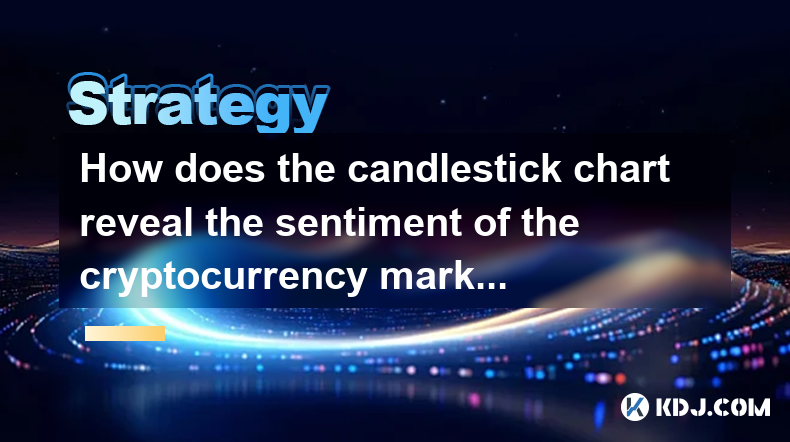
Deciphering Market Sentiment Through Candlestick Charts
Candlestick charts are a powerful tool for visualizing price movements in the cryptocurrency market. They provide a concise representation of the opening, closing, high, and low prices over a specific period, allowing traders to gauge market sentiment. Understanding how these elements interact reveals valuable insights into investor behavior. The size and color of the candles themselves are key indicators.
A green (or bullish) candlestick indicates that the closing price was higher than the opening price, suggesting positive sentiment and buying pressure. The longer the green candle, the stronger the bullish sentiment. Conversely, a red (or bearish) candlestick signifies that the closing price was lower than the opening price, indicating negative sentiment and selling pressure. The length of the red candle also reflects the intensity of the bearish pressure.
The wicks, or shadows, extending above and below the candle body, provide additional information. A long upper wick suggests that the price reached a high but then retreated, indicating potential resistance and possibly weakening bullish momentum. Conversely, a long lower wick suggests that the price tested a low but then rebounded, possibly indicating strong support and buying pressure stepping in.
Analyzing multiple candlesticks together reveals patterns that offer deeper insights into market sentiment. For instance, a series of consecutive green candlesticks forms an uptrend, indicating sustained buying pressure and positive market sentiment. Conversely, a series of consecutive red candlesticks forms a downtrend, indicating sustained selling pressure and negative market sentiment.
Specific candlestick patterns, such as dojis, hammers, and engulfing patterns, can provide even more nuanced insights into market sentiment. A doji, with its equal opening and closing prices, often signals indecision or a potential reversal in market trend. A hammer, characterized by a small body and a long lower wick, often suggests a potential bullish reversal. An engulfing pattern, where one candle completely engulfs the previous candle, can signal a significant shift in market sentiment.
The combination of candle body size, wick length, and patterns provides a comprehensive picture of market sentiment. Traders often use candlestick charts in conjunction with other technical indicators to confirm their analysis and make more informed trading decisions. However, it's crucial to remember that candlestick charts alone don't predict the future; they merely reflect past price action and investor behavior.
Understanding the relationship between candlestick patterns and trading volume further enhances the analysis of market sentiment. A large volume accompanying a bullish candlestick reinforces the positive sentiment, while a low volume suggests weak bullish momentum. Similarly, a large volume accompanying a bearish candlestick strengthens the negative sentiment, while a low volume suggests weak bearish momentum.
The time frame chosen for the candlestick chart also significantly impacts the interpretation of market sentiment. Short-term charts, such as 1-minute or 5-minute charts, capture short-term fluctuations in sentiment, while long-term charts, such as daily or weekly charts, reveal longer-term trends and sentiment shifts. Choosing the appropriate time frame is essential for accurate interpretation.
Experienced traders often incorporate additional technical indicators alongside candlestick analysis to gain a more comprehensive understanding of market sentiment. These indicators, such as moving averages, Relative Strength Index (RSI), and MACD, can help confirm or contradict the signals provided by the candlestick patterns. This multi-faceted approach allows for a more robust and reliable assessment of market sentiment.
Furthermore, understanding the context of broader market events is crucial when interpreting candlestick charts. News events, regulatory announcements, and technological developments can significantly influence market sentiment and affect the interpretation of candlestick patterns. Ignoring these external factors can lead to inaccurate conclusions.
The use of candlestick charts requires practice and experience. Beginners should start by focusing on identifying basic candlestick patterns and understanding the relationship between candle body size, wick length, and volume. As experience grows, traders can incorporate more advanced techniques and indicators to refine their analysis.
Careful observation and consistent practice are key to mastering the art of reading candlestick charts and interpreting market sentiment. Remember, while candlestick charts offer valuable insights, they are just one tool in a trader's arsenal. Combining them with other analytical methods leads to a more well-rounded and informed trading strategy.
Frequently Asked Questions
Q: Can candlestick charts predict future price movements?
A: No, candlestick charts reflect past price action and cannot predict future price movements with certainty. They provide insights into market sentiment and potential trend reversals, but they are not a crystal ball.
Q: Are candlestick charts reliable on their own?
A: While useful, candlestick charts are most effective when used in conjunction with other technical indicators and a broader understanding of market conditions. Relying solely on candlestick patterns can be risky.
Q: What are some common candlestick patterns to watch for?
A: Some common patterns include dojis (indicating indecision), hammers (suggesting potential bullish reversals), engulfing patterns (signaling significant shifts in sentiment), and shooting stars (suggesting potential bearish reversals).
Q: How does trading volume affect candlestick chart interpretation?
A: High volume confirms the strength of a price movement indicated by the candlestick, while low volume suggests weak momentum. A large green candle with low volume might indicate a lack of conviction behind the price increase.
Q: What timeframes are best for analyzing cryptocurrency market sentiment using candlestick charts?
A: The optimal timeframe depends on your trading strategy. Short-term charts (e.g., 1-minute, 5-minute) are useful for short-term trades, while longer-term charts (e.g., daily, weekly) provide a broader perspective on market trends and sentiment.
Disclaimer:info@kdj.com
The information provided is not trading advice. kdj.com does not assume any responsibility for any investments made based on the information provided in this article. Cryptocurrencies are highly volatile and it is highly recommended that you invest with caution after thorough research!
If you believe that the content used on this website infringes your copyright, please contact us immediately (info@kdj.com) and we will delete it promptly.
- Mutuum Finance (MUTM) quietly gains traction, currently trading at just $0.025 during its presale.
- 2025-04-04 19:00:12
- Coldware (COLD), Sui (SUI), and Pepe Coin (PEPE) Stand Out as Promising Altcoins
- 2025-04-04 19:00:12
- Pi Network (PI) Was Once Again Not Shortlisted in Binance's “Vote to List” Initiative
- 2025-04-04 18:55:12
- PaladinMining Dogecoin cloud mining service provider has been legally established in the UK since 2016 and is a leader in clean energy sustainable cloud mining.
- 2025-04-04 18:55:12
- Smart Money Wallets Have Been Accumulating These 7 Cryptocurrencies
- 2025-04-04 18:50:12
- IF YOU spot this tiny error on your 2p coin, it could be worth more than £1,000.
- 2025-04-04 18:50:12
Related knowledge
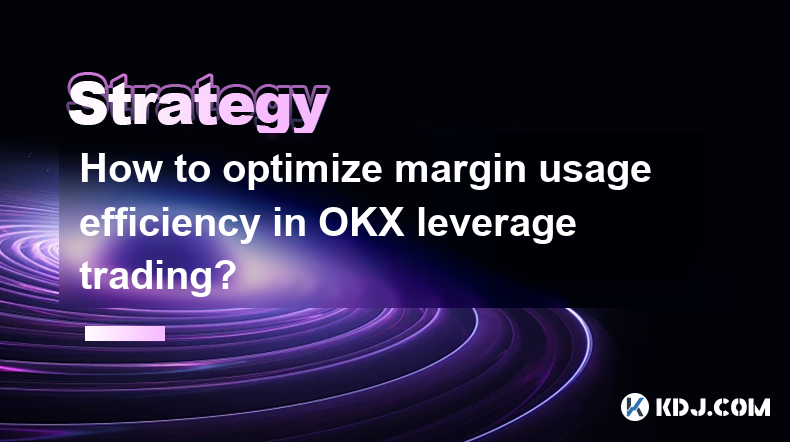
How to optimize margin usage efficiency in OKX leverage trading?
Apr 04,2025 at 03:21pm
Margin usage efficiency is a critical aspect of leverage trading on platforms like OKX, where traders aim to maximize their returns while managing risk. Understanding how to optimize margin usage can significantly enhance your trading performance. This article will delve into various strategies and techniques to help you make the most out of your margin...
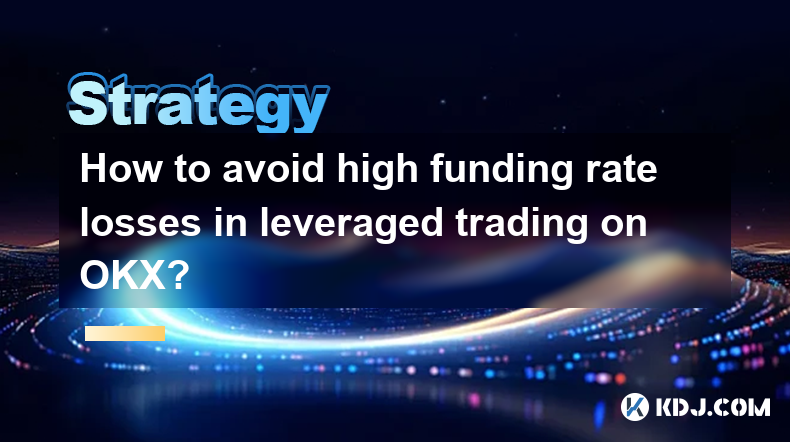
How to avoid high funding rate losses in leveraged trading on OKX?
Apr 04,2025 at 05:28pm
Understanding Funding Rates in Leveraged Trading on OKXFunding rates are a critical component of leveraged trading on platforms like OKX. They represent the periodic payments made between traders to maintain the balance between the futures price and the spot price of the underlying asset. When trading with leverage, understanding and managing funding ra...
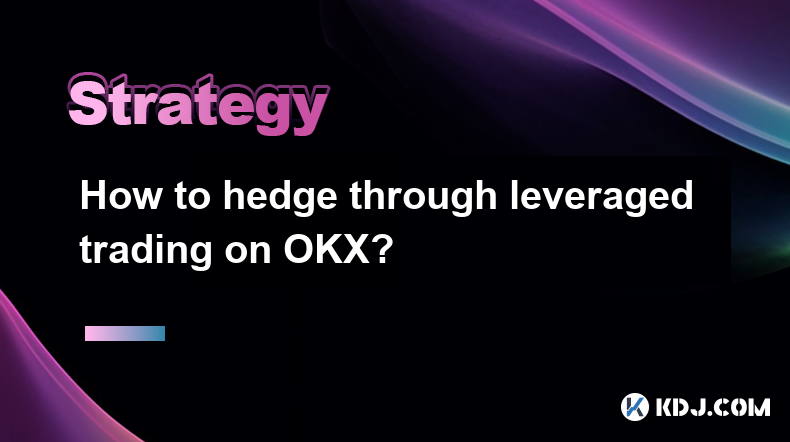
How to hedge through leveraged trading on OKX?
Apr 04,2025 at 01:42pm
Hedging through leveraged trading on OKX can be an effective strategy for managing risk in the volatile cryptocurrency market. This article will guide you through the process of setting up and executing a hedging strategy using OKX's leveraged trading features. We will cover the basics of leveraged trading, how to set up a hedge, and the steps to execut...
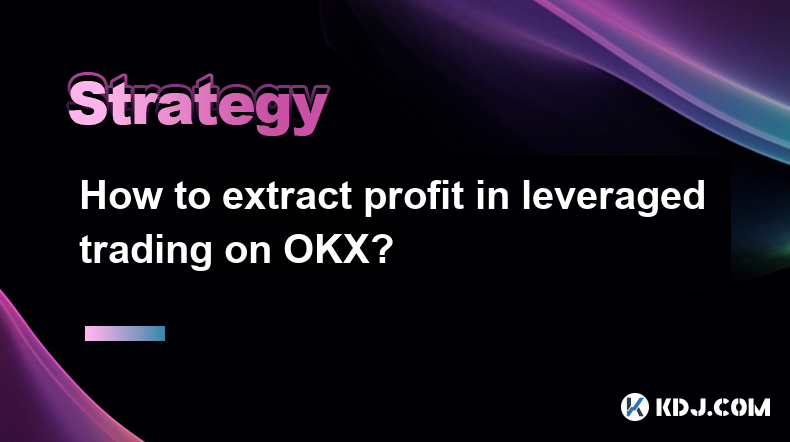
How to extract profit in leveraged trading on OKX?
Apr 04,2025 at 05:42am
Leveraged trading on OKX can be a powerful tool for traders looking to amplify their potential profits. However, it also comes with increased risk, making it essential to understand how to effectively extract profit from these trades. This article will guide you through the process of leveraging OKX's platform to maximize your gains while managing the i...
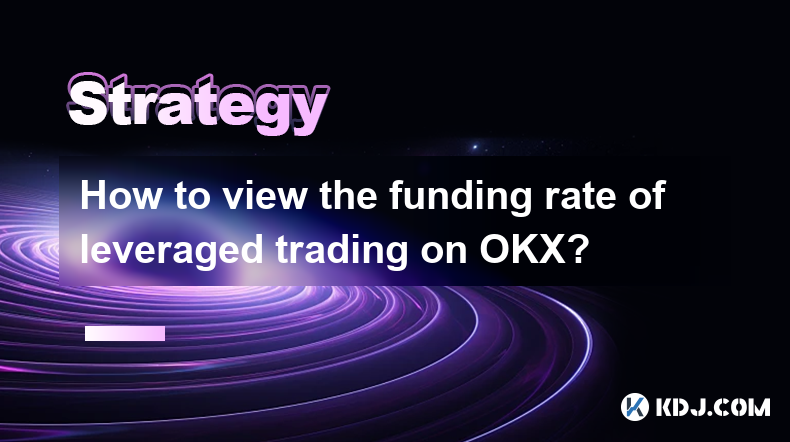
How to view the funding rate of leveraged trading on OKX?
Apr 04,2025 at 07:07am
Understanding the funding rate is crucial for anyone involved in leveraged trading on OKX. The funding rate is a mechanism used in perpetual futures contracts to ensure that the market price of the futures remains closely aligned with the spot price of the underlying asset. This article will guide you through the process of viewing the funding rate on O...
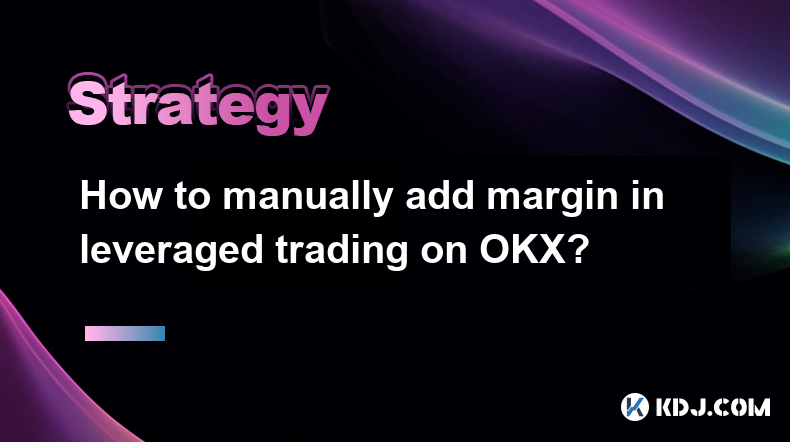
How to manually add margin in leveraged trading on OKX?
Apr 04,2025 at 05:21pm
Introduction to Margin in Leveraged Trading on OKXLeveraged trading on OKX allows traders to amplify their trading positions by borrowing funds from the platform. Margin is the amount of funds required to open and maintain these leveraged positions. Understanding how to manually add margin is crucial for managing your trades effectively and avoiding liq...

How to optimize margin usage efficiency in OKX leverage trading?
Apr 04,2025 at 03:21pm
Margin usage efficiency is a critical aspect of leverage trading on platforms like OKX, where traders aim to maximize their returns while managing risk. Understanding how to optimize margin usage can significantly enhance your trading performance. This article will delve into various strategies and techniques to help you make the most out of your margin...

How to avoid high funding rate losses in leveraged trading on OKX?
Apr 04,2025 at 05:28pm
Understanding Funding Rates in Leveraged Trading on OKXFunding rates are a critical component of leveraged trading on platforms like OKX. They represent the periodic payments made between traders to maintain the balance between the futures price and the spot price of the underlying asset. When trading with leverage, understanding and managing funding ra...

How to hedge through leveraged trading on OKX?
Apr 04,2025 at 01:42pm
Hedging through leveraged trading on OKX can be an effective strategy for managing risk in the volatile cryptocurrency market. This article will guide you through the process of setting up and executing a hedging strategy using OKX's leveraged trading features. We will cover the basics of leveraged trading, how to set up a hedge, and the steps to execut...

How to extract profit in leveraged trading on OKX?
Apr 04,2025 at 05:42am
Leveraged trading on OKX can be a powerful tool for traders looking to amplify their potential profits. However, it also comes with increased risk, making it essential to understand how to effectively extract profit from these trades. This article will guide you through the process of leveraging OKX's platform to maximize your gains while managing the i...

How to view the funding rate of leveraged trading on OKX?
Apr 04,2025 at 07:07am
Understanding the funding rate is crucial for anyone involved in leveraged trading on OKX. The funding rate is a mechanism used in perpetual futures contracts to ensure that the market price of the futures remains closely aligned with the spot price of the underlying asset. This article will guide you through the process of viewing the funding rate on O...

How to manually add margin in leveraged trading on OKX?
Apr 04,2025 at 05:21pm
Introduction to Margin in Leveraged Trading on OKXLeveraged trading on OKX allows traders to amplify their trading positions by borrowing funds from the platform. Margin is the amount of funds required to open and maintain these leveraged positions. Understanding how to manually add margin is crucial for managing your trades effectively and avoiding liq...
See all articles




















































































